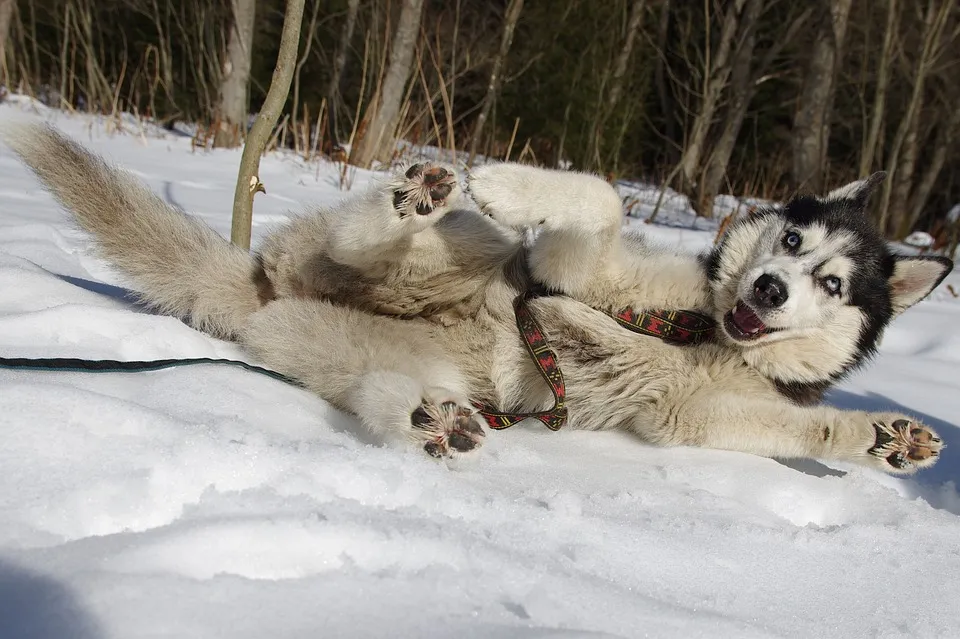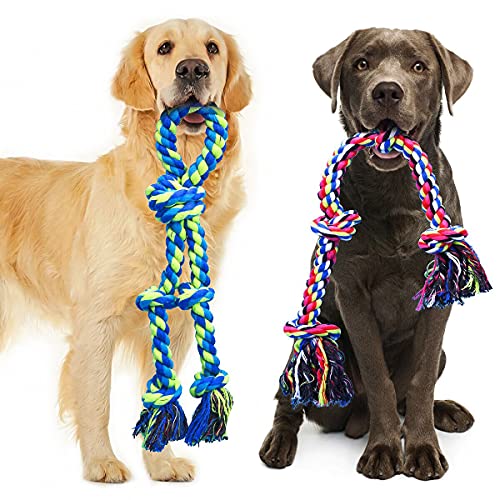If you have a furry friend who spends a lot of time outside, it’s important to know how to keep them warm and comfortable in cold weather. Dogs are vulnerable to hypothermia and frostbite just like humans, so it’s crucial to take steps to protect them from the elements. In this article, we’ll cover some tips on how to keep your dog warm outside, so your furry companion can enjoy the great outdoors even in chilly temperatures.
Understanding Your Dog’s Cold Tolerance
The first step to keeping your dog warm outside is to understand their cold tolerance. Some breeds, such as Siberian Huskies and Alaskan Malamutes, are better equipped to handle cold weather than others. Dogs with short hair or little body fat may struggle to stay warm in colder temperatures. Older dogs and puppies are also more susceptible to the cold. By knowing your dog’s breed and individual needs, you can take steps to keep them safe and comfortable in cold weather.
Creating a Comfortable Shelter
One of the most important things you can do to keep your dog warm outside is to provide them with a comfortable shelter. The shelter should be large enough for your dog to stand up, turn around, and lie down comfortably. It should also be well-insulated and protected from wind and moisture. Adding a layer of straw or blankets can provide additional insulation and help your dog stay warm. By creating a comfortable shelter, you can help your dog stay safe and warm even in the coldest weather.
Key Takeaways
- Understand your dog’s cold tolerance to determine their needs in cold weather.
- Create a comfortable shelter that is well-insulated and protected from the elements.
- Dress your dog in proper winter clothing and accessories to keep them warm and safe.
Understanding Your Dog’s Cold Tolerance
https://www.youtube.com/watch?v=9k4CTExnF4c&embed=true
As a responsible dog owner, it’s important to understand your dog’s cold tolerance. Some dogs are more sensitive to cold temperatures than others, and it’s essential to know how to keep them safe and warm during the colder months.
Factors That Affect Your Dog’s Cold Tolerance
Several factors can affect your dog’s cold tolerance, including breed, age, fur, and body temperature. Dogs with double coats, such as Alaskan Malamutes, Bernese Mountain Dogs, and Siberian Huskies, are more cold-tolerant than dogs with thin coats, like Greyhounds and Chihuahuas. Older dogs and small dogs may also be more sensitive to cold temperatures.
Signs That Your Dog is Cold
It’s important to know the signs that your dog is cold, so you can take measures to warm them up. Some signs that your dog may be cold include shivering, whining, lethargy, and a slow heartbeat. If you notice any of these signs, it’s important to take action to warm your dog up.
How to Keep Your Dog Warm Outside
To keep your dog warm outside, you can provide them with a sweater or coat, especially if they have a thin coat. You can also provide them with a warm, dry shelter that is protected from the wind and elements. It’s also important to limit their time outside in cold weather, especially if they are sensitive to the cold.
In conclusion, understanding your dog’s cold tolerance is essential for keeping them safe and warm during the colder months. By taking the necessary precautions and providing them with warmth and shelter, you can ensure that your furry friend stays happy and healthy all winter long.
Creating a Comfortable Shelter
https://www.youtube.com/watch?v=CwnOlB-LYBk&embed=true
When it comes to keeping your dog warm outside, creating a comfortable shelter is essential. Here are some tips to help you create a cozy and safe space for your furry friend.
Choosing the Right Dog House
Choosing the right dog house is crucial. It should be large enough for your dog to move around comfortably, but not too large that it loses heat. The dog house should also be elevated off the ground to prevent moisture from seeping in.
You can choose from various materials such as wood, plastic, or metal. Wood is a popular option as it provides natural insulation, but it needs to be treated to prevent rotting. Plastic and metal dog houses are also good options as they are durable and easy to clean.
Providing Adequate Bedding
Providing adequate bedding is essential to keep your dog warm. You can use blankets, straw, or a dog bed inside the dog house. Blankets and straw are good insulators, but they need to be replaced regularly to prevent moisture buildup. A dog bed is a great option as it provides comfort and insulation.
Additional Heat Sources
If you live in an extremely cold climate, you may need to provide additional heat sources. A heated dog bed or a heated pad can provide warmth without the risk of fire. You can also install a heater in the dog house, but make sure it is safe and doesn’t overheat.
A fireplace or a space heater should never be used as they can cause fires and carbon monoxide poisoning. If you’re using an electric heater, make sure the cords are out of reach and not chewed by your dog.
By following these tips, you can create a comfortable shelter for your dog and keep them warm outside. Remember to check the shelter regularly for any signs of damage or moisture buildup.
Proper Winter Clothing and Accessories
« Golden Retriever Puppy Tips: How to Care for Your New Furry Friend
How to Stop a Golden Retriever from Digging: Friendly Tips and Tricks »

When the temperature drops, it is important to keep your dog warm and comfortable. One of the best ways to do so is by selecting the right winter clothing and accessories. Here are some tips to help you choose the right gear for your furry friend.
Selecting the Right Dog Coat
A dog coat is a great way to keep your dog warm during the winter months. When selecting a coat, make sure it fits properly and provides adequate coverage. Look for a coat that covers your dog’s chest, back, and belly. A coat with a hood can also help keep your dog’s head and ears warm.
There are a variety of dog coats available, including those made from fleece, wool, and waterproof materials. Consider your dog’s needs and activity level when selecting a coat. For example, a waterproof coat may be more suitable for a dog that enjoys playing in the snow, while a fleece coat may be better for a dog that spends more time indoors.
The Importance of Booties
Booties are another important accessory to consider when keeping your dog warm outside. They can protect your dog’s paws from the cold, snow, ice, and salt. When selecting booties, make sure they fit properly and are comfortable for your dog to wear. Look for booties made from durable, waterproof materials that provide good traction.
If your dog is not used to wearing booties, it may take some time for them to get used to them. Start by letting your dog wear them for short periods of time indoors, and gradually increase the amount of time they wear them. Be patient and positive, and reward your dog with treats and praise for wearing their booties.
In conclusion, selecting the right winter clothing and accessories is an important part of keeping your dog warm and comfortable during the winter months. Consider your dog’s needs and activity level when selecting a coat and booties, and make sure they fit properly and are comfortable for your furry friend to wear.
Maintaining Health and Safety in Cold Weather
https://www.youtube.com/watch?v=3OXBAtdDisU&embed=true
When the temperature drops, it’s important to take extra precautions to keep your furry friend safe and healthy. Here are some tips to help you maintain your dog’s health and safety during the winter months.
Feeding and Hydration
Make sure your dog is getting enough food and water to maintain their body heat in cold temperatures. Senior dogs, puppies, and active dogs may require more food than usual to keep their metabolism up. Additionally, provide your dog with fresh, clean water at all times, and consider using a heated water bowl to prevent the water from freezing.
Exercise and Play
It’s still important to keep your dog active during the winter months, but be mindful of the weather conditions. Avoid extremely cold temperatures, wind, and falling snow or ice. If you must take your dog outside, monitor their behavior for signs of lethargy, disinterest, or discomfort. Keep playtime short and sweet to prevent your dog from getting too cold.

Monitoring for Signs of Distress
Keep an eye on your dog’s nose, ears, paws, and tail for any signs of discoloration or frostbite. Dogs with shorter fur or those with less body fat are more susceptible to the cold and may require additional protection. If your dog shows signs of hypothermia, such as lethargy or shivering, take them to a veterinarian immediately.
In addition, it’s important to keep your dog safe from chemicals and extreme weather conditions. Salt and other chemicals used to melt ice can be harmful to your dog’s paws, so wipe their paws after each walk. Consider using dog booties or a protective balm to prevent damage. If the weather is too extreme, it’s best to stay indoors and play games with your dog to keep them entertained.
Remember, your dog’s natural insulation is not enough to keep them warm in cold temperatures. By taking these precautions and monitoring your dog’s behavior, you can help them stay safe and healthy during the wintertime.
Frequently Asked Questions
What is the best way to keep a dog warm in an outside kennel during winter?
The best way to keep your dog warm in an outside kennel during winter is to provide them with an insulated dog house. Insulated dog houses are designed to keep your dog warm and dry, even in the coldest temperatures. You can also add a heating pad or heated dog bed inside the dog house for extra warmth. It’s important to make sure that the dog house is the right size for your dog, as a larger dog house will be harder to keep warm.

Do blankets provide enough warmth for dogs outside?
Blankets can provide some warmth for dogs outside, but they are not enough to keep them warm in extremely cold temperatures. If you are using blankets to keep your dog warm, make sure to use thick, heavy blankets that are designed for outdoor use. You should also provide your dog with a warm, insulated dog house to help keep them warm and dry.
How can I keep outdoor animals warm during cold weather?
To keep outdoor animals warm during cold weather, provide them with a shelter that is insulated and protected from the wind. You can also provide them with straw or hay to create a warm bed inside their shelter. Make sure to check their water frequently to make sure it hasn’t frozen over. You can also provide them with heated water bowls to prevent the water from freezing.
Can hay be used to keep dogs warm outside?
Yes, hay can be used to keep dogs warm outside. You can use straw or hay to create a warm bed inside your dog’s shelter. Make sure to change the straw or hay frequently to keep it clean and dry. Hay can also be used as insulation around the outside of your dog’s shelter to help keep them warm.
What should I put in my dog’s outdoor house to keep them warm?
To keep your dog warm in their outdoor house, you should provide them with an insulated dog house that is the right size for your dog. You can also add a heating pad or heated dog bed inside the dog house for extra warmth. You should also provide your dog with thick, heavy blankets that are designed for outdoor use. Make sure to check the blankets frequently to make sure they are dry and clean.
At what temperature is it too cold for dogs to be outside?
It’s too cold for dogs to be outside when the temperature drops below freezing. Dogs can suffer from hypothermia and frostbite in extremely cold temperatures. If you must take your dog outside in cold weather, make sure to provide them with a warm coat or sweater, and limit their time outside. If the temperature drops below freezing, it’s best to keep your dog indoors.















